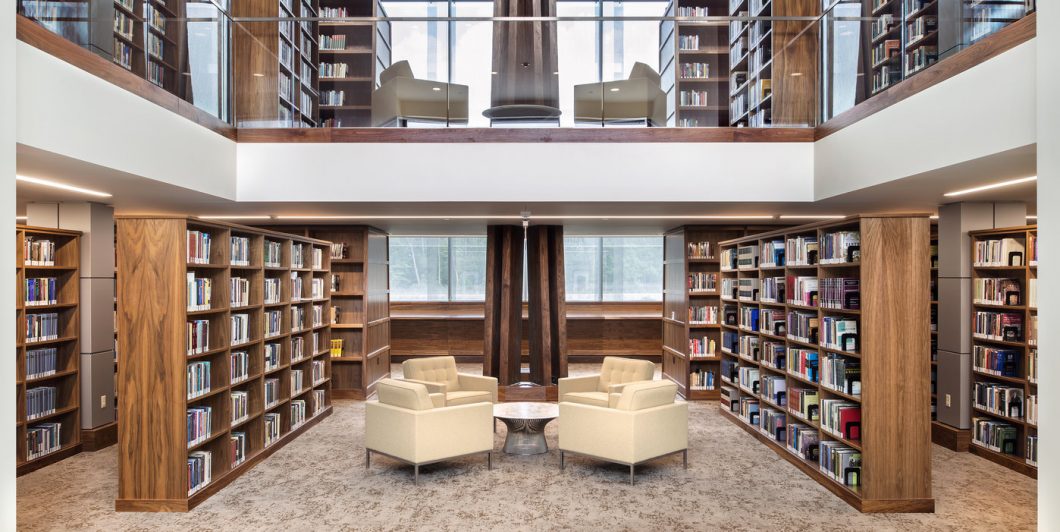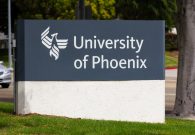Politics, Philosophy, and Economics programs are good examples of how to transmit the wisdom of Western civilization in the modern world.
Does the American University Deserve to Survive?
With corporate America, academia, and the cultural institutions of this country now captured by the political left, how does conservativism, libertarianism, and classical liberalism forge ahead? How can one encourage the study and promotion of Liberty Fund’s mission of the “ideal of a society of free and responsible individuals”? And, assuming citizens must have “some capacity to read and write and reason” if such a society is to exist, what kind of educational arrangement is best suited to cultivate this ideal?
Sometimes to move forward one first has to look back. In March 28-31, 1971, Liberty Fund explored these questions in a seminar held in Indianapolis with B.A. Rogge’s and P.F. Goodrich’s position paper, “Education in a Free Society,” that set forth the problem of American university education. Gottfried Dietze, Russell Kirk, Henry Manne, and Stephen Tonsor were invited to present papers in response to Rogge and Goodrich. There also were about a dozen more participants to the seminar, which included George C. Roche, Jameson G. Campaigne, John Chamberlain, Israel M. Kirzner, and Arthur A. Shenfield. The culmination of this seminar was the 1973 publication, Education in a Free Society, with the addition of Dorothy L. Sayers’ classic essay about primary and secondary education, “The Lost Tools of Learning,” to complement the presenters’ expertise about university education.
The Motives for Education
In their paper, Rogge and Goodrich outlined their ideal of a free society as one in which each individual was free to do anything that was peaceful, behaved responsibly, and not subjected to intimidation. But for such a society to exist, citizens must be educated accordingly. This, in turn, raises questions about the purpose of education, the political and economic arrangements that would best support this purpose, and what educational techniques should be deployed. For Rogge and Goodrich, the purpose of education should be left to the individual to decide and, because of this, the state should have no role in education. A private educational system rather than a public one would provide better educational opportunities to students and be more economically efficient for society.
With respect to the liberal arts college, Rogge and Goodrich argued that these institutions should openly and honestly state their ideological perspective and believed that intelligent and thoughtful students would naturally gravitate to those schools who were committed to a free society. Faculty would be selected for their qualities as teachers and their commitment to a philosophy of a free society with their salaries dependent upon their effectiveness at teaching. There would be no departments and the curriculum would consist of the great books and optional reading lists from faculty.
There also would be no entrance requirement and the college would not be responsible for the private lives of students, e.g., dormitories. The only expense for students would be their tuition and books. Students would be taught by individual study, Socratic seminars, and faculty lectures. There would be no grades, although students could be evaluated by faculty by papers or examinations if they were willing to pay an additional fee. For Rogge and Goodrich, grading was not necessary for education because the real purpose of education was self-determinative, for “each individual to make the maximum progress possible for that person.”
It is worth noting how radical this libertarian proposal of reforming American higher education was: a private system that is subject to the marketplace and free from state control. Only such an arrangement, Rogge and Goodrich believed, can produce individuals educated in and committed to the philosophy of a society of free and responsible people. It avoided the economically inefficient, socially inequitable, and uniform pedagogical approach of the public system that created citizens who are taught what was contrary to human nature and destructive to a free and responsible society. While Rogge and Goodrich thought it was unlikely that American society would move quickly towards a private system of education, they held that progress in education would not be achieved until such an ideal was presented and plan formulated of how to get there.
Power and Purpose
Gottfried Dietze offered the first response to Rogge and Goodrich by distinguishing the state, which has coercive power, from the university, which lacked such power. Since universities cannot force a single model of education on the nation, a number of different types of universities could flourish in America, with each one catering to the different needs and ideals of individuals. But with the decline of federalism and the growth of the national government in education, the American university has been both nationalized and monopolized by the political left that has threaten the free exploration of truth. In face of students’ protests and the campus riots of the time, Dietze called for their suppression and sanction for those responsible. It was the failure of universities at that time to establish a clear mission to guide their trustees, administrators, faculty, and students that had made campuses vulnerable to political radicalization and state control. Ultimately, Dietze concluded that each university must determine the reason for its own existence and fend off as much as possible the state’s encroachment upon its autonomy.
The second presenter, Russell Kirk, proposed wisdom, and through wisdom truth, as the purpose for the university. According to Kirk, wisdom was the “apprehension of the human condition” of “high knowledge” and its critical and practical application to one’s life. Kirk cited John Henry Newman’s The Idea of a University and T.S. Eliot’s “The Aims of Education” as examples of liberal education that imparted a sense of moral worth among those who would lead society. In a series of recommendations, Kirk called for the university to return to liberal education by reducing the mandatory curriculum, promoting intellectual autonomy for the faculty, and raising academic admission standards for students.
The university should also abandon in loco parentis and engage only on cultivating a student’s moral intellect, for only such a university would be able to withstand the democratic impulse of materialism that Tocqueville had observed afflicted Americans. Kirk’s proposal for the university to abandon in loco parentis is striking because the American university already was relinquishing this role, a process that had begun with the 1961 case Dixon v. Alabama. However, after forty years, nature abhors a vacuum. In the beginning of this century, the American university had resumed its parental role but in a “fun-free” form with free speech zones, mandatory diversity days, and Title IX investigations that dispense with due process.
Faculty Blues
In contrast to the two previous presenters, Henry G. Manne adopted an “organizational” perspective to analyze how the American university has moved from a market of satisfying donors to a market of meeting the educational demands of students. According to Manne, this transformation shifted power from the trustees to faculty with results that have benefited faculty at the expense of student learning, e.g., adjunct instructors, graduate student teaching. With trustees no longer in control, administrators simply reflected the interests of whichever constituency among the faculty happened to be more powerful at that time. Although administrative figures like the university president possessed some power through the budget, this power can only be deployed tactically since the president has no authority over academic matters.
But one wonders whether faculty have benefitted as much as Manne claims. As Finkelstein, Martin Conley, and Schuster have documented in 2016, faculty workloads have increased over time with more time being spent on preparation for teaching and committee work. Faculty autonomy and funding has declined, salaries have remained stagnant, and tenure continues to be a contentious issue with the rise of post-tenure review. With only 27 percent of all faculty positions tenure track, the stability and viability of a career as a college professor is tenuous at best.
According to Manne, it was the rise of the public university that was critical in shifting power from trustees to faculty. Since public universities could not adhere to a particular religious or cultural standard, there was less institutional loyalty among students and faculty at any particular school. Furthermore, with funding primarily from the state and federal government, as well as from large foundations, trustees have lost their ability to influence curriculum or faculty hires. The only way to revive American higher education system would be the adoption of a free market paradigm where “consumer preference could operate” in a field of “meaningful competition.” Specifically, Manne proposed for the government “to get out of education business,” repeal state and federal tax exemptions for non-profit universities, and the conversion of university’s endowments to shares of stock for faculty to own: the only way to save the American university is to transform all of them into for-profit ventures to create a genuinely free market for higher education.
However, Manne believed such an adoption of the free market to the American university was unlikely due to political reasons. He was equally pessimistic about a return to trustee’s authority over faculty, curriculum, and students, which was the organizational model of American higher education until the 19th century. Thus, we are left with the co-op model of joint ownership and management. Contending interest groups give up “responsibility for overall university affairs in exchange for the right to be financed and then left alone.” There was little incentive for innovation, each department became highly bureaucratized, and advancement in the system was through personal favor and aversion to risk rather than based on ability and talent. American higher education consequently attracted people who were inherently “collectivist, statist, and nonmarket” in their attitudes.
The final response was from Stephen J. Tonsor who echoed Dietze’s observation that the authority of the university is social in nature because it was freely given. However, this authority has been lost to the prevalence of philosophical relativism in academia, political conformity among faculty (“only” 80.8 of faculty were identified as liberals or leftists in 1969!), the exclusion of religion from the curriculum, and the rise of “identity politics” in scholarship. Other challenges the university confronted were the expansion of the university’s mission, such as to include student welfare services; faculty and student control over the curriculum at the expense of trustees and administrators; and the constant search for university funding that substituted practicality over liberal education. The result was the American university had no “clear vision of what the objective is.”
As the university’s dependence upon government funding has increased and its mission expanded, a new class of administrators have been inserted into American higher education to police students, faculty, and even trustees so they are in compliance with federal and state mandates.
The discussion that followed was summarized by Burleigh and offers a fascinating picture of the conversation among the participants. While the participants agreed that freedom was not “interfering with the rights of others” and that truth had a crucial place in the university, there was disagreement about the nature and function of the university itself. Some believed the university was a type of community; others saw it as a contractual relationship between trustees and students; some argued that the university has a special role in creating a free society; others claimed it was like any other civil institution in America; some favored teaching over research; others supported the opposite. However, almost all the participants endorsed the idea that the trustees should reestablish their authority in the university and be funded solely by tuition with the exception of Kirk who favored an academic senate with limited authority and the use of endowments.
But perhaps the most interesting turn in the conversation was the idea of state vouchers for students to use at universities of their choice as a temporary measure to move American higher education towards a free market system. Because the government still would have control over a student’s education, some feared that a successful voucher program could actually eliminate private schools in America. Others, however, believed it was a practical and pragmatic opportunity for conservatives and libertarians to explore. While the idea of school vouchers has yet to be formulated as a public policy in American higher education, it has been adopted in the primary and secondary education across the country, beginning in 1990 with the Milwaukee school district being one of the first to enact such a proposal.
Perennial Challenges
What strikes one reading about a seminar fifty years ago is how little has changed in American higher education, especially when compared to the primary and secondary education: the unabated growth and interference of the federal and state governments in the American university, the continual loss of authority of trustees over curriculum and faculty, the expansion of university services that coddle students from admittance to graduation, the left’s politicization of curriculum and personnel, and the replacement of the university’s core mission as the search for truth to treating the student as a consumer and providing them the entitled experience of partying, diversity-training, and hooking-up on a campus with rock-climbing walls and state-of-the-art recreational centers. All of these problems that the authors and participants saw in 1971 have only expanded in size and scope the past fifty years. While there are now a fair number of for-profit universities, they do not constitute a genuine free market, nor do they offer any serious competition to those schools that are subsidized by federal student loans. The influence and prestige all remains with traditional non-profit universities and colleges.
Many of the problems that the authors had correctly diagnosed of what had ailed the American university still persist: the dominance of the political left among the faculty, curriculum, and students; the impotence of trustees to assert any sort of institutional control; the university’s constant search for funding; and the continual growth of government in higher education. But most of all, it is the American university’s abandonment of the search for truth that continues to haunt it today, for the university still is not able to articulate a reason for its existence. This loss of social authority only makes the American university vulnerable to cultural fads and political trends that wash upon it like the waves on the shore, unpredictable, fleeting, and unstable.
While a few of the presenters’ assessments turned out to be wrong—such as Kirk’s proposal for the university to abandon in locus parentis and Manne’s belief that faculty predominantly benefit in the university—there was one aspect that the authors did not foresee: the rise of the administrative class that is beholden neither to trustees nor faculty. One only needs to think of diversity czars or vice-presidents of student life to see how these administrators are only accountable to themselves. As the university’s dependence upon government funding has increased and its mission expanded, a new class of administrators have been inserted into American higher education to police students, faculty, and even trustees so they are in compliance with federal and state mandates. While the authors were cognizant of these problems, they failed to see the rise of the administrative class as the true power-brokers in the American university.
Is the future fate of American higher education one of repeated overpromise and constant underperformance? Or does Rogge’s and Goodrich’s libertarian proposal of a private system that is subject to the marketplace and free from state control present a viable alternative? Until we as a society consider this ideal and attempt to implement it bit by bit into American higher education, we should not expect any different outcomes of rising costs and declining results than what we have had this past fifty years. Until we look back into the past to see what had worked and what had failed, we have to no way to know if we are moving forward in the right direction. A Liberty Fund seminar back in 1971 and the book that followed can provide us a starting point for such contemplations.



